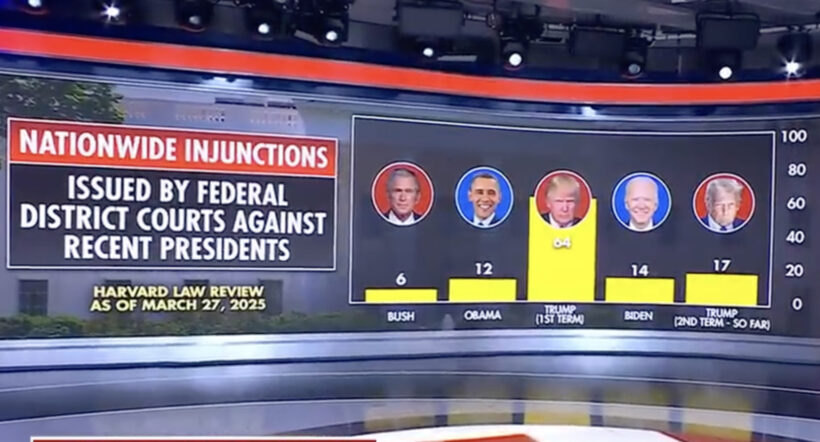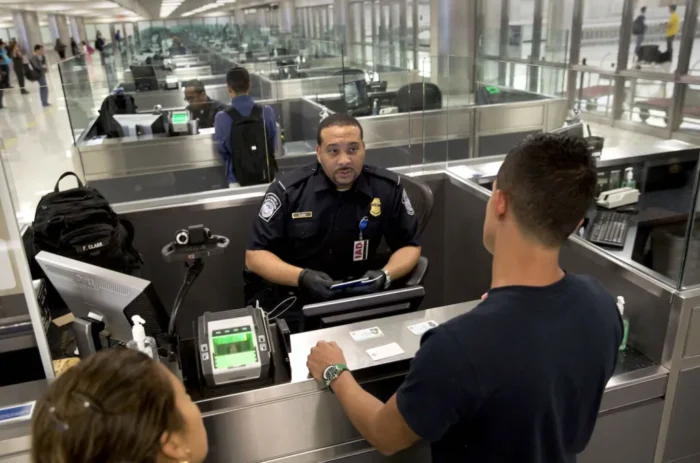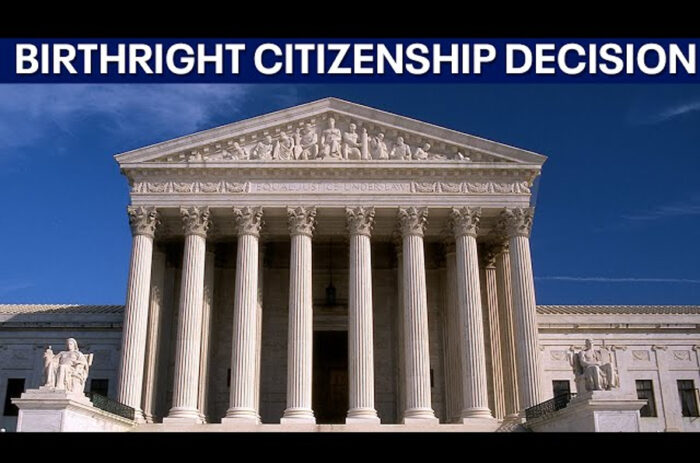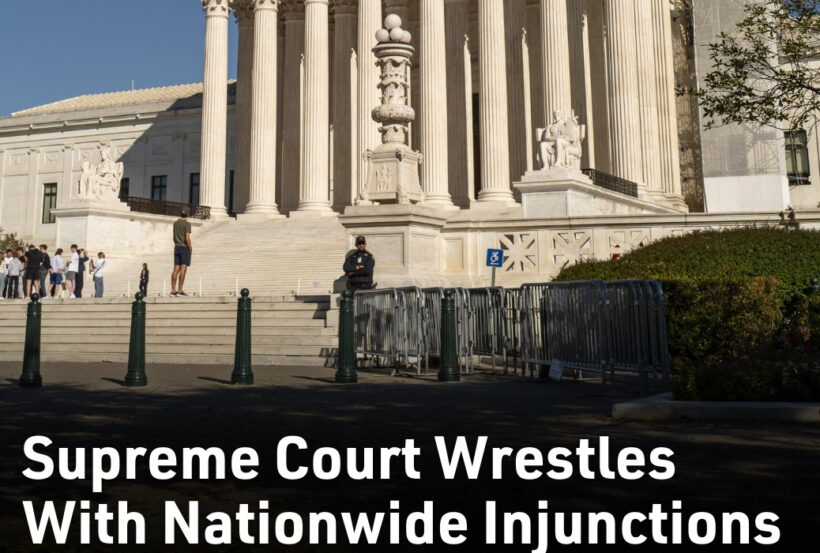
redo Jump to...
print Print...
The U.S. Supreme Court heard oral arguments on May 15 about the power of district judges to issue nationwide injunctions.
A nationwide injunction—also known as a universal or national injunction—is a court order that prohibits the federal government from enforcing a statute, regulation, or policy not just against the plaintiffs in a case, but against anyone in the country, including nonparties.
The Justices will consider the question: How much authority does a district judge have?
According to U.S. law, district judges are limited to the jurisdiction of their particular court. So, the government is arguing district judges who issue injunctions that affect the entire nation are overstepping their authority.
Notably, some of the Justices have spoken out against nationwide injunctions in the past, including Justice Elena Kagan.
Speaking on a panel at Northwestern University School of Law in 2022, Justice Kagan condemned “forum shopping” based on who’s the sitting U.S. President. She said:
“In the Trump years, people used to go to the Northern District of California, and in the Biden years, they go to Texas. It just can’t be right that one district judge can stop a nationwide policy in its tracks and leave it stopped for the years that it takes to go through the normal process.”
It will be interesting to see how she rules now that the Trump Administration is in power.
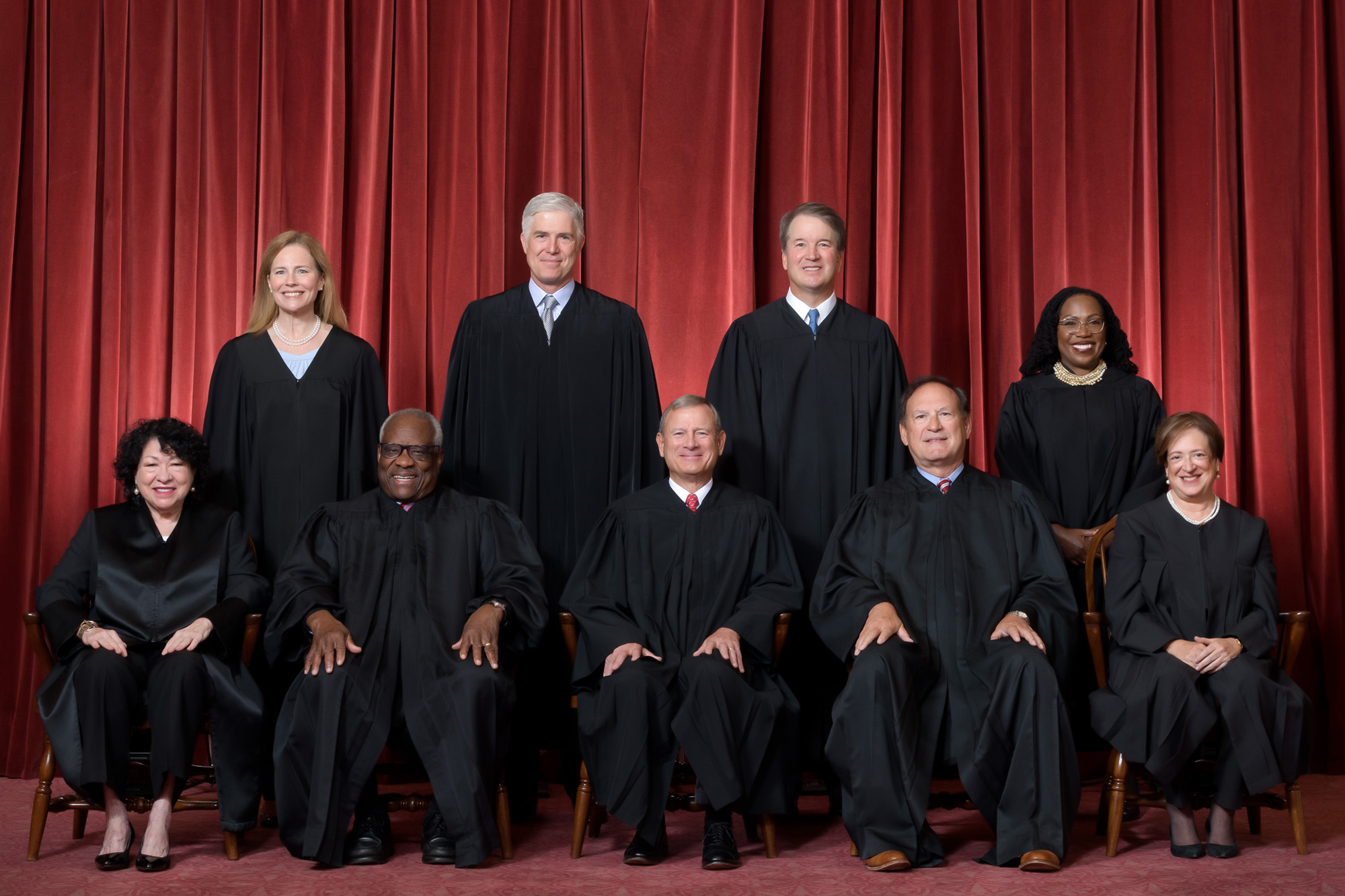
Front row, left to right — Associate Justices Sonia Sotomayor, Clarence Thomas, Chief Justice John G. Roberts, Jr., Associate Justices Samuel A. Alito, Jr. and Elena Kagan.
Back row — Associate Justices Amy Coney Barrett, Neil M. Gorsuch, Brett M. Kavanaugh and Ketanji Brown Jackson.
(Image: Collection of the Supreme Court of the United States)
Justice Samuel Alito made the following point during oral arguments last week:
“Let’s put out of our minds the merits of this [case] and just look at the abstract question of universal injunctions. What is your response to what some people think is the practical problem? And the practical problem is that there are 680 district court judges, and they are dedicated, and they are scholarly, and I’m not impugning their motives in any way, but sometimes they’re wrong. And all Article III judges are vulnerable to an occupational disease, which is the disease of thinking that “I am right, and I can do whatever I want.”
…ACLJ Chief Counsel Jay Sekulow has a longstanding history of appearing before the U.S. Supreme Court. He weighed in on the possible outcome of the May 15 hearing:
“I can tell you just by the oral arguments that it is a very closely divided Court. It’s not clear where [all] the Justices [stand]…. The argument is still going on right now. … I’ve been able to listen to it and read transcripts as they were coming. And here’s the reality. Looking at it right now, it’s a 4-4 case. And [Justice] Gorsuch could be the determining factor here. And he did not seem very sympathetic to President Trump’s solicitor general.”
The main question before the justices is the scope of injunctions. District court judges have issued a record number of injunctions in the first 100 days of the Trump Administration. Under President George W. Bush, there were only 6 such injunctions, which increased to 12 under Obama. However, when Trump came to office, he faced 64 such orders in his first term.
When Biden and the Democrats returned to office, it fell back to 14. That was not due to more modest measures. Biden did precisely what Trump did in seeking to negate virtually all of his predecessors’ orders and then seek sweeping new legal reforms. He was repeatedly found to have violated the Constitution, but there was no torrent of preliminary injunctions at the start of his term.
Yet, when Trump returned to office, the number of national injunctions soared again in the first 100 days [to 39, per the Washington Post] which surpassed the number for the entirety of Biden’s term.
This is a rare argument. First, it is a shadow docket filing that usually results in summary decisions without oral argument. Moreover, this matter came after what is commonly viewed as the final day for oral arguments. The Court granted a rare late oral argument*, reflecting that multiple justices view this matter sufficiently serious to warrant a break from standard operating procedures. [*Oral arguments are generally scheduled on Mondays, Tuesdays, and Wednesdays, starting in October and continuing through late April. The court typically recesses at the end of June.]
Rather than arguing a “question presented” on birthright citizenship, the Administration is solely looking for limits on the district courts as appeals continue on the “important constitutional questions” raised by birthright citizenship.
The Administration argues that the Constitution does not give judges the power to issue universal injunctions and that courts are limited to addressing the cases before them in a given district. The Administration acknowledges that class actions can create the basis for universal injunctions, offering a moderate resolution to the Court. In such cases, if the parties can meet the standard for a national class[action lawsuit], they can seek a national or universal injunction.
The Court is expected to hand down its decision on Trump’s appeal of nationwide injunctions by late June or early July 2025. This timing aligns with the Court’s usual practice of issuing major rulings before the end of its term. As of now, no specific date for the decision has been announced.
Compiled from ACLJ and Jonathan Turley .org.
Questions
NOTE: Watch the videos under “Resources” before answering the questions.
1. What are nationwide injunctions?
2. What argument does the Trump administration use in appealing to the Supreme Court over several nationwide injunctions issued by district court judges?
3. List the number of injunctions issued by district courts against each of the following president’s orders/policies.
- George Bush’s 2 terms in office
- Barack Obama’s 2 terms in office
- Donald Trump’s 1st term
- Joe Biden’s one term in office
- Donald Trump’s first 4 months of his 2nd term
4. a) How did Justice Elena Kagan (who was nominated by President Obama) view nationwide injunctions when they were used against President Biden?
b) What point did Justice Samuel Alito (who was nominated by President Bush) make during oral arguments last week?
5. What does ACLJ Chief Counsel Jay Sekulow think will be the outcome of the Trump administration’s appeal?
6. a) The Supreme Court’s term begins on the first Monday in October, concludes hearing oral arguments at the end of April and then finish handing down its rulings by late June (or occasionally the first week of July). Why did the Court accept the government’s late oral argument?
b) When is the Court expected to hand down its decision on the administration’s appeal?
Background
Read the case at supremecourt.gov.
Read George Washington University Law School professor Jonathan Turley’s posts on X on his view of the May 15 Oral Arguments on the Trump administration challenging universal injunctions.
Resources
Supreme Court weighs judges’ power, May 15, 2025:
Jonathan Turley, May 15, 2025:
American Center for Law and Justice (ACLJ), May 15, 2025:
Daily “Answers” emails are provided for Daily News Articles, Tuesday’s World Events and Friday’s News Quiz.
